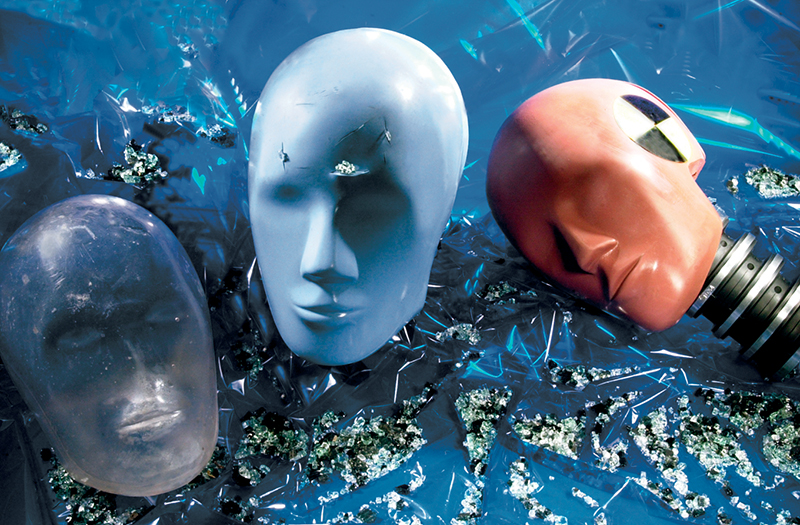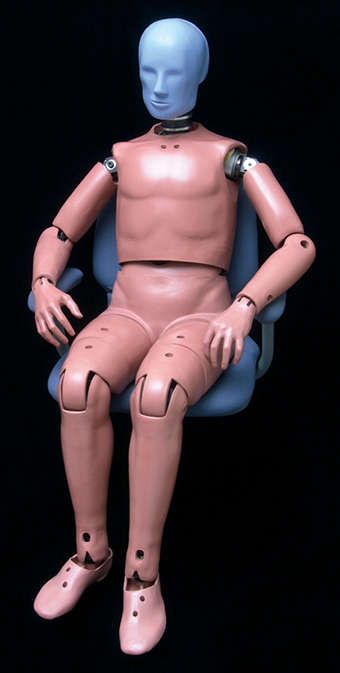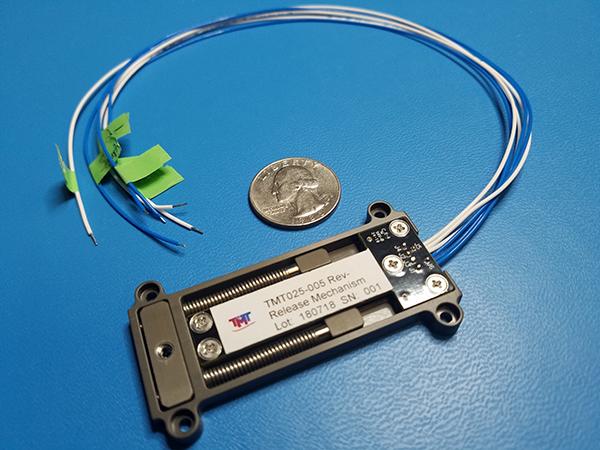
Intellectual Dummies
When NASA assisted in the development of a robotic vision system to determine the position and orientation of bar code targets back in 1987, little did anyone know that the innovation would eventually be used to evaluate lacerations and contusions in simulated car crashes.
The progression of this far-reaching application began during a Small Business Innovation Research (SBIR)-funded project involving NASA's Goddard Space Flight Center and Triangle Research & Development Corporation (Triangle R&D), of Research Triangle Park, North Carolina. The two entities collaborated to create "Smart Eyes," a charge coupled device (CCD) camera that, for the first time, could read and measure bar codes without the use of lasers.
The laser-free camera operated in conjunction with software and algorithms created by Goddard and Triangle R&D that could track bar code position and direction with speed and precision, as well as with software that could control robotic actions based on vision system input. This accomplishment was intended for robotic assembly of the International Space Station, helping NASA to increase production while using less manpower.
After successfully completing the two-phase "Telerobotic Rendezvous and Docking Vision System Architecture" project with Goddard, Triangle R&D was awarded a separate SBIR contract from the U.S. Department of Transportation (DOT), which was interested in using the newly developed NASA camera technology to heighten automotive safety standards. In 1990, Triangle R&D and the DOT developed a mask made from a synthetic, plastic skin covering to measure facial lacerations resulting from automobile accidents. Traditionally, scientists tested for the severity of facial lacerations by tying materials such as chamois and leather around the heads of crash dummies. The strength and characteristics of these materials, however, were very questionable.
By pairing NASA's camera technology with Triangle R&D's and the DOT's newly developed mask, a system that could provide repeatable, computerized evaluations of laceration injury was born.
The Soft Tissue Damage Assessment System underwent further testing at a University of Virginia crash laboratory, and was deemed ready for the commercial world. The new measurement device was licensed to First Technology Safety Systems, Inc., the world's largest creator of sophisticated crash test dummies and computer crash test models. The Plymouth, Michigan-based company, which developed research dummies for testing air and space craft ejection seats as far back as the 1950s, applied the new technology (now called the "Facial Laceration Measurement System") to its Hybrid III-50th percentile product line.
The Facial Laceration Measurement System encompasses a measurement cabinet with an adjustable mounting for the laceration mask, which fits over the head of a Hybrid III Dummy, an illumination system, an imaging camera with mirror, and electrical control. The system also includes a personal computer with one monitor for operation, and another high-resolution, large-format monitor for displaying the lacerated mask.
During a simulated car crash, the laceration mask is fitted over the Hybrid III head form. After the impact occurs, the mask is removed from the head and brought to the Facial Laceration Measurement System for analysis. Next, the mask is submitted to calibration testing, where it is assembled onto a rigid transparent head form. External illumination of the laceration mask in the cabinet is switched "on" in order to ensure that the imaging camera can obtain the best image. The area of interest on the mask and head form is then positioned in the camera's field of view with the adjustable mounting fixture. Next, the computer performs the menu-driven calibration procedure, and the area of interest on the head is delimited with a computerized window. Edge sensitivity of the laceration image is selected to yield the best contrast at each defining corner of the window. This step determines the endpoints of the measurement of each laceration.
Final analysis takes place after the calibration process. The illumination system is now switched to internal so that a bulb inside the rigid transparent head form lights up the laceration mask from within. Once again, the area is delimited and edge sensitivity is selected, so that the final data on size and number of lacerations are stored for examination.
With inspiration from the robotic vision system developed over a decade ago, First Technology Safety Systems' Facial Laceration Measurement System is presently being used by automobile and component manufacturers worldwide in vehicle testing, including General Motors, Fujijyu, and Autoliv.

A Laceration Mask is placed over the head of a Hybrid III-50th percentile Crash Test Dummy in laceration test configurations.

The Transparent Rigid Mask, Facial Laceration Mask, and Hybrid III-50th percentile Head and Neck simulate effects of kibbled windshield glass on a Laceration Mask.













